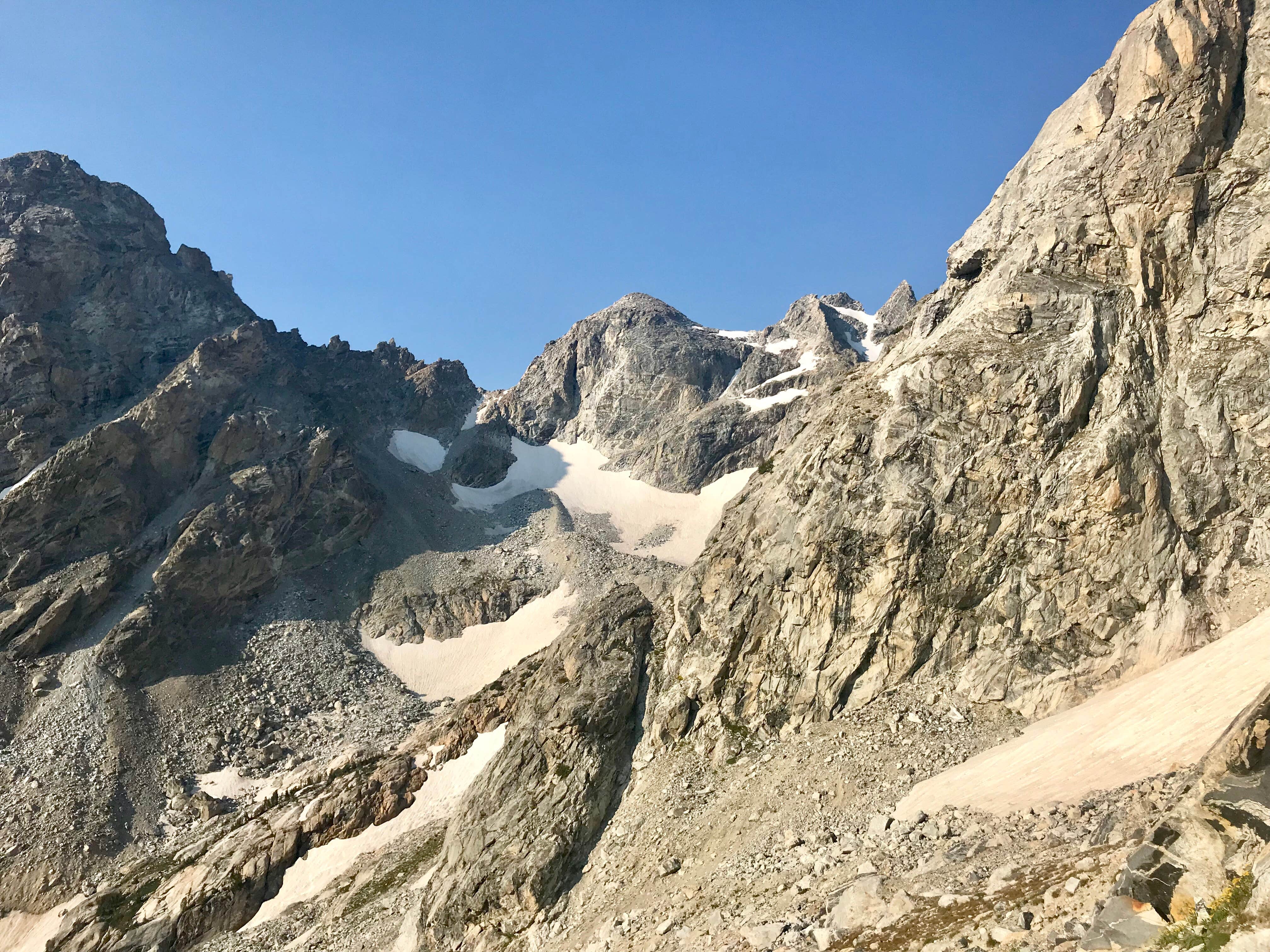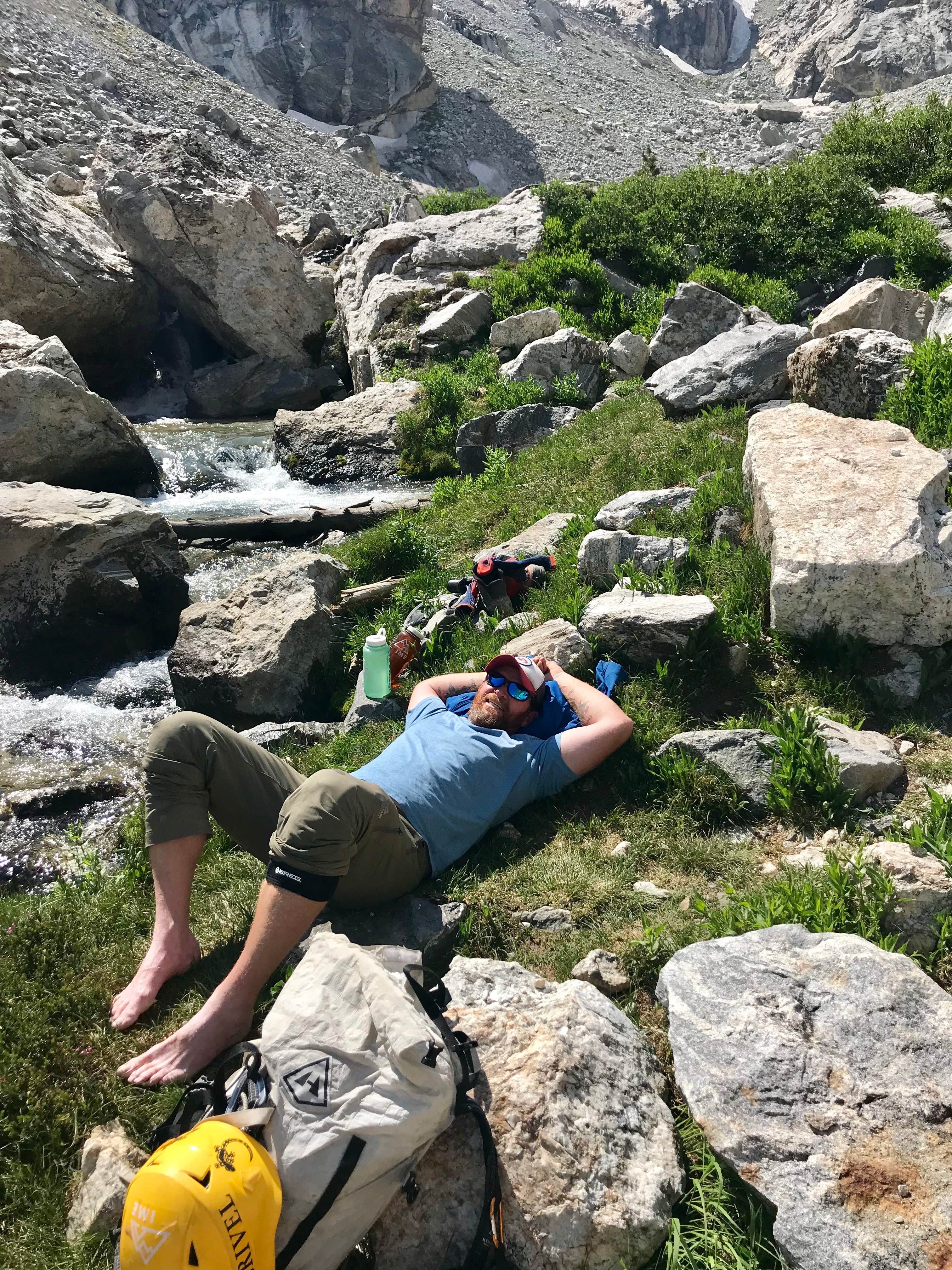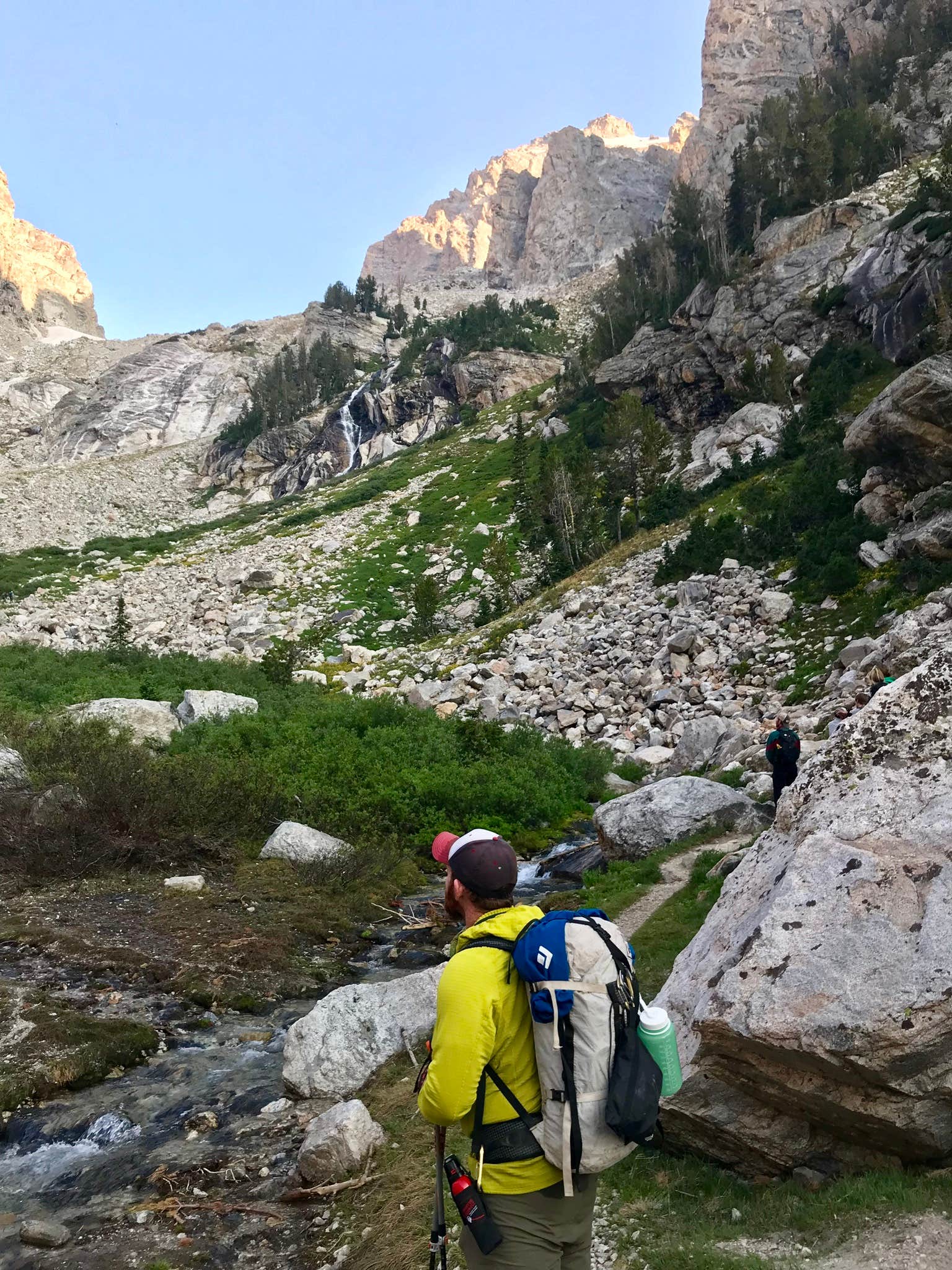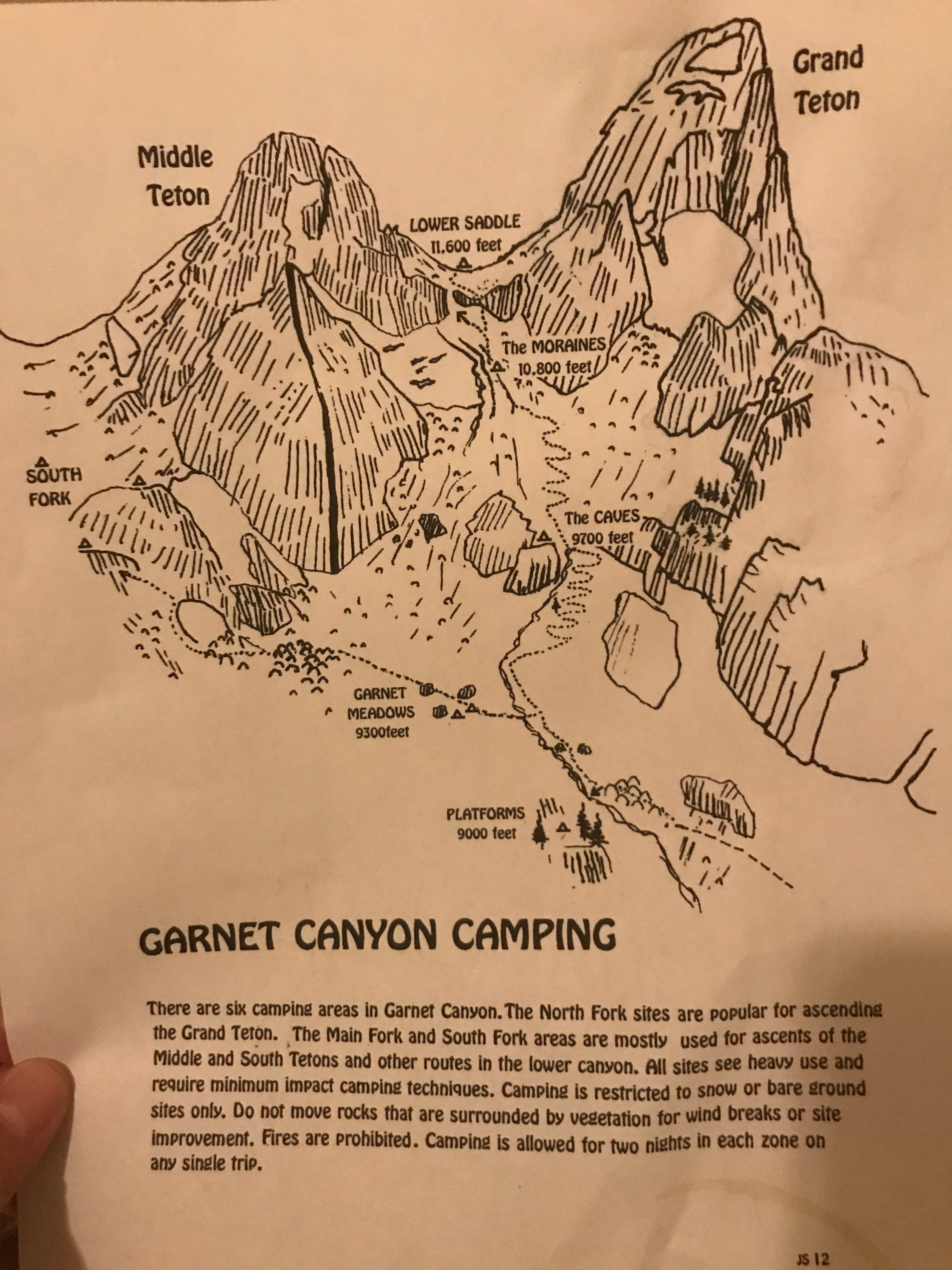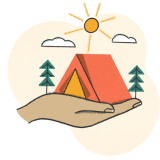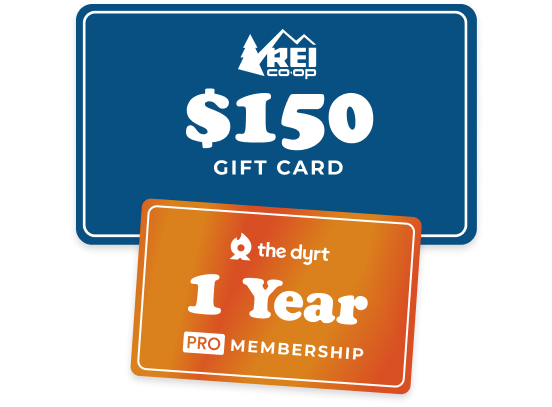I embarked on a day summit of the Grand Teton. I did not make it to the top, so I will tell my story of the adventure to the Lower Saddle and what I will do differently next time.
Campground Review: Most importantly, a backcountry camping permit is required to camp at any of the 6 Garnet Canyon locations. 3 up north fork can be used if summiting the Grand, the other for Middle and South peaks. There are 2 ways to acquire a permit. Jan 1 the application for permits opens. 25-33% of permits are reserved in this fashion. The remainder are first come first serve bright and early in the morning at the GTNP Jenny Lake Ranger Station. If you are planning on summiting the Grand Teton, the Lower Saddle or Moraines are the most desirable locations. It seems the guide services get quite a few of theses locations so they are quite competitive and difficult to acquire the day of. The cost in person at the Ranger Station is $35.00. There is an additional fee of $45.00($80 total) if you reserve ahead of time online. It is 7 miles and 5000 feet of elevation gain to reach the Lower Saddle camping zone. The Platforms camping zone is about 5 miles in and 2500 feet of elevation gain. The Caves and Moraines zones are between the two.
When camping in the back country, you are not allowed to pitch your tent over any vegetation. It must be a bare space or on the glacier. There are numerous areas available, and actually blend in to the surroundings pretty well. As you get higher, you will see some have created some rock enclosures to block wind. This is not allowed, but if it is existing, it can be used. Use 'Leave no Trace' principles while camping, and leave it better than you found it if possible.
The top two camping zones have some permanent structures that the guide services use. The top zone, the lower saddle is the most popular with guide services. Unfortunately it makes it much more difficult to get your hands on a permit for that zone. There is drinking water from a spring available at the the Lower Saddle. All other sources are recommended to be filtered.
If you use the restroom, it must be 200 feet off the trail and away from any water source. Once you get to some common areas, unfortunately, you can tell where people go to the restroom. Bag it up and pack it out is required. There is a wooden shelter at the top of the lower saddle that you can enter to do your duty and bag it up and pack it out. It certainly smells as though folks don't follow this rule. No sweet breath of mountain air near that structure.
I recommend checking out this website when planning your Grand Teton Summit trip. Tons of helpful beta and maps. http://wyomingwhiskey.blogspot.com/?m=1
Gear Review: As a Ranger for the Dyrt, I occasionally receive gear to demo in the field while camping. Hiking the Grand Teton was the perfect opportunity to put the Renogy Tactical Water Microfilter to the test. https://www.renogy.com/ This trek was taxing and I consumed a lot of water to keep hydrated. The Renogy water filter is compact and super easy to put together and use quickly. There is a silicon tube that attached to each end of the device. There is a float and sinker you attach to the distal end, the float keeps the tip out of any silt and debris at the bottom and the sinker keep the tip submerged so you don't pump air. The tip of the other tube goes directly into your bottle or water canister. Pump the handle until your vessel is full. It goes pretty quickly and the device is easily stored in the soft drawstring pouch provided so everything is kept clean and in one place.
The filter should be replaced after 3000 liters filtered or one year of use, which ever comes first. The device comes with replacement O rings and a syringe to flush the device for cleaning.
I recommend this water filter. It is more compact than the Katyden filter my travel partner used. The rate of filtration was comparable. Weight was very similar. The casing on this is aluminum, so the weight may be slightly heavier than some plastic models on the market, but it is very durable.
FIVE STARS!



